Influencing Consumer Behaviour II
The message learning approach
Effective persuasive communications are:
Attention-drawing
Comprehensible
Convincing
Memorable
Key factors
The source (who says the message?)
The message (What is said?)
What media will transmit the message?
The recipient (who receives the message?)
The source
A “source” often a spokesperson in an ad—may be chosen because they are expert, famous, attractive, or a “typical” consumer
What makes a good source?
The source credibility model
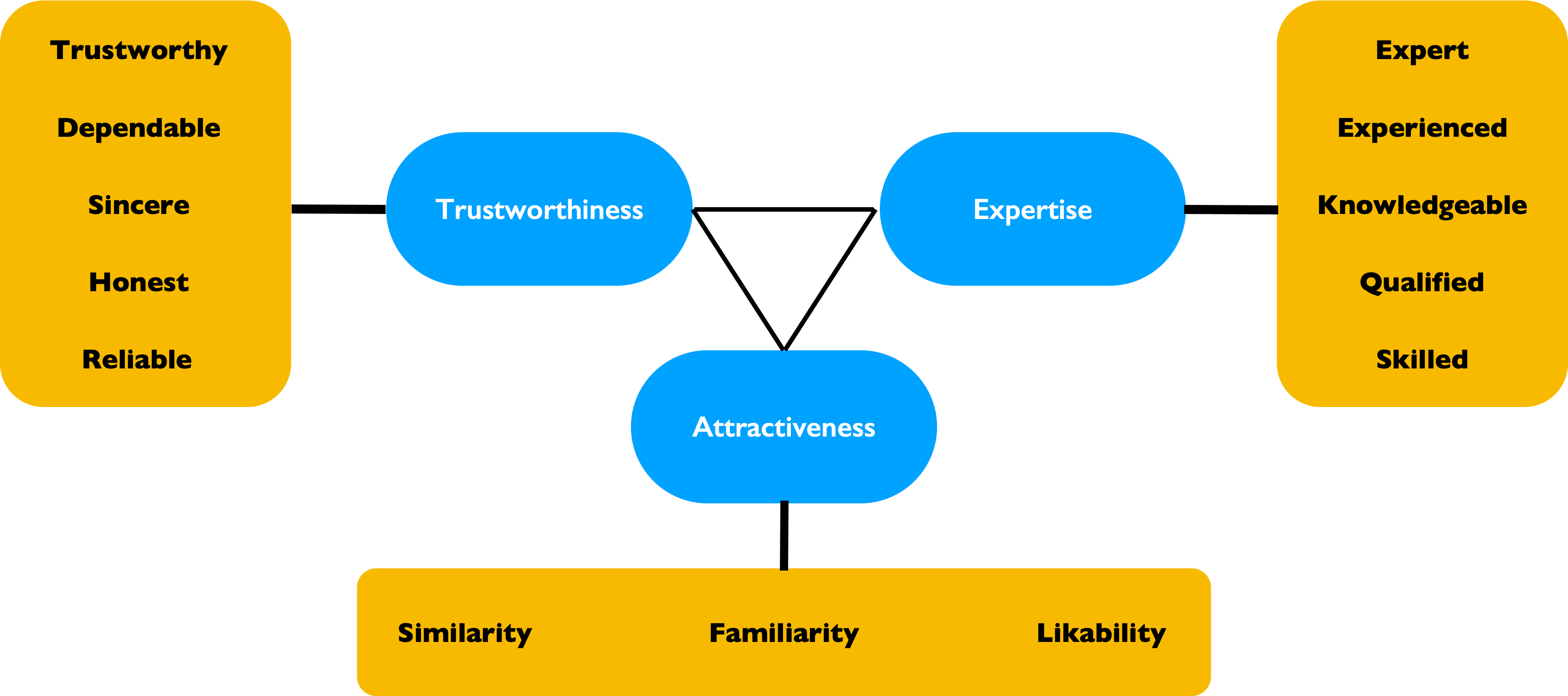
Source attractiveness
Source attractiveness: perceived social value of source
Physical appearance
Personality
Social status
Similarity (in terms of personal backgrounds beliefs or attitudes)
Halo effect: people who rank high on one dimension are assumed to excel at other dimensions
- Example: good-looking people are thought to be smarter, cooler, happier

The message
Several message elements influence its persuasiveness:
Visual vs. verbal communication of the message
Repetition
One-sided vs. two-sided argument
Type of appeal
Visual communication
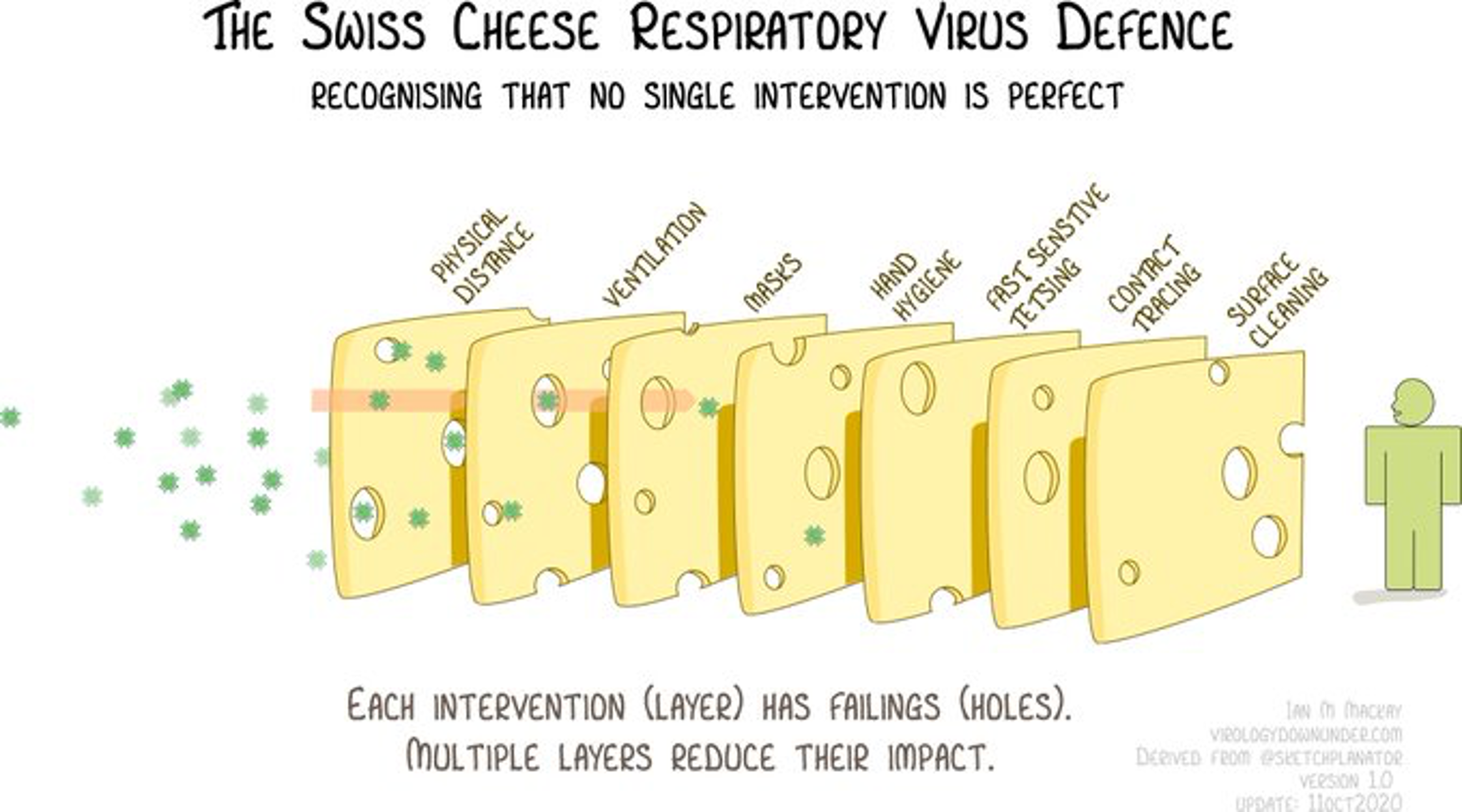
Repetition and Two-Factor theory
Repetition can be a double-edged sword
- Mere exposure effect vs. habituation
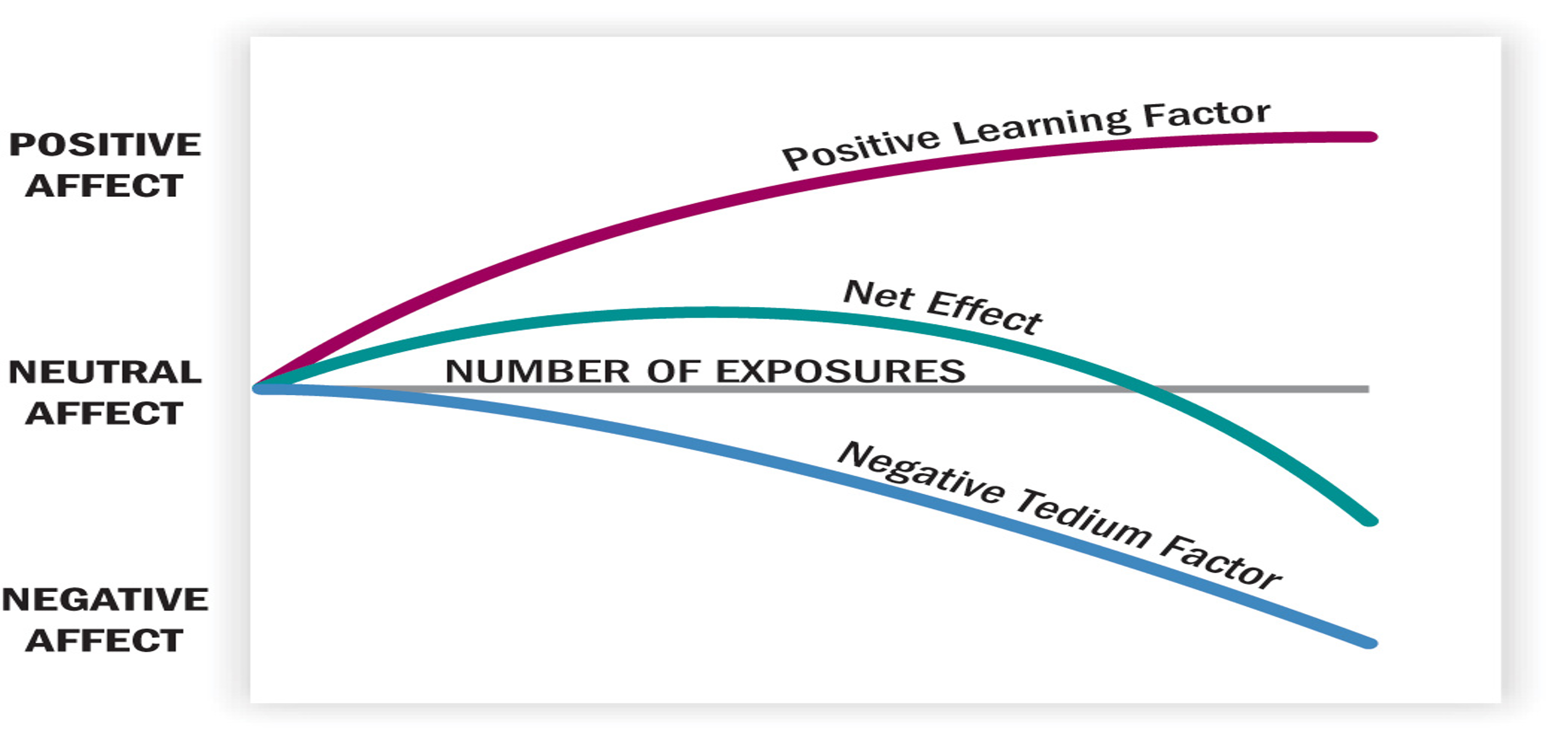
One- vs. two-sided appeals
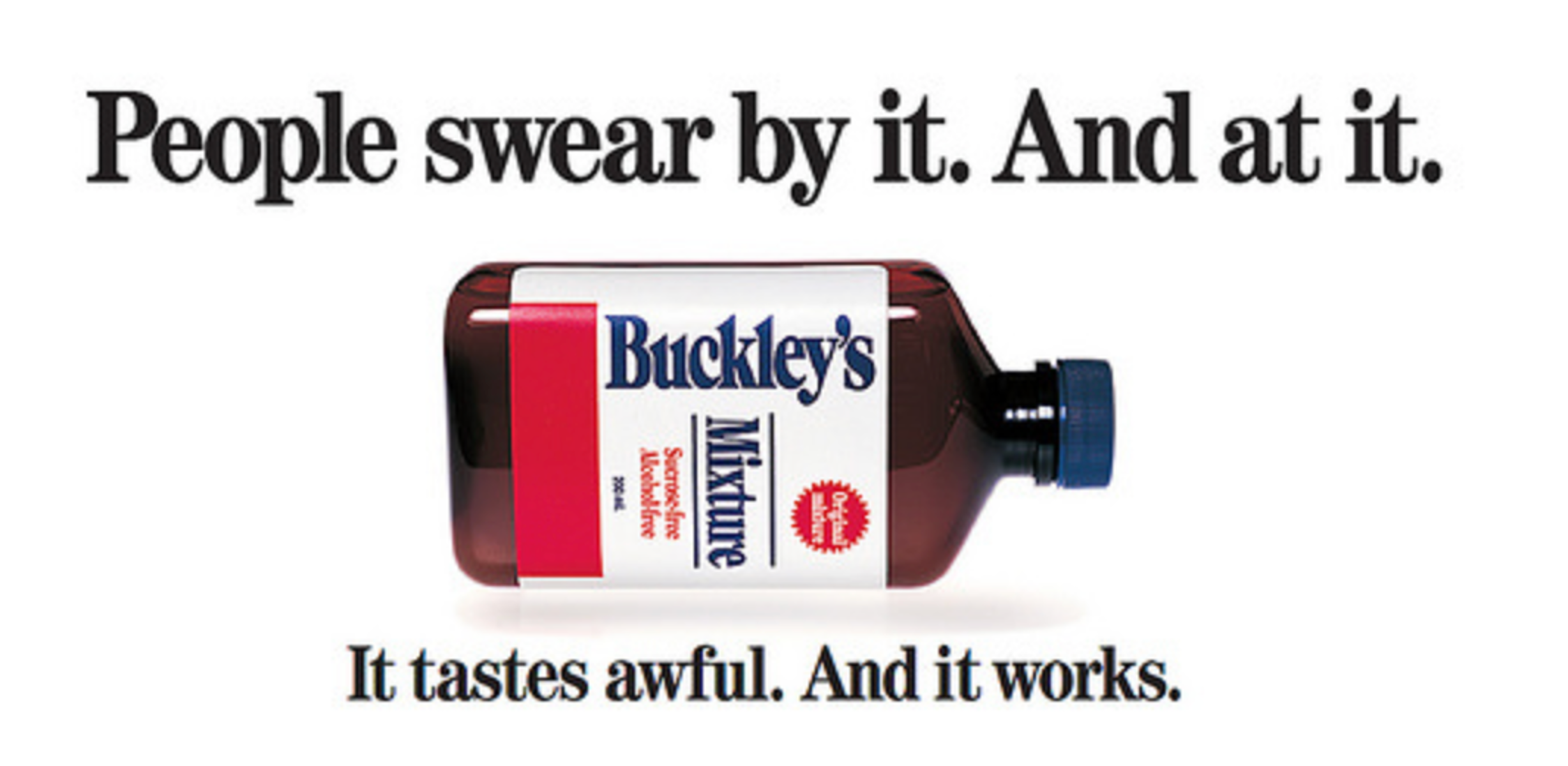
Rational vs. emotional appeal
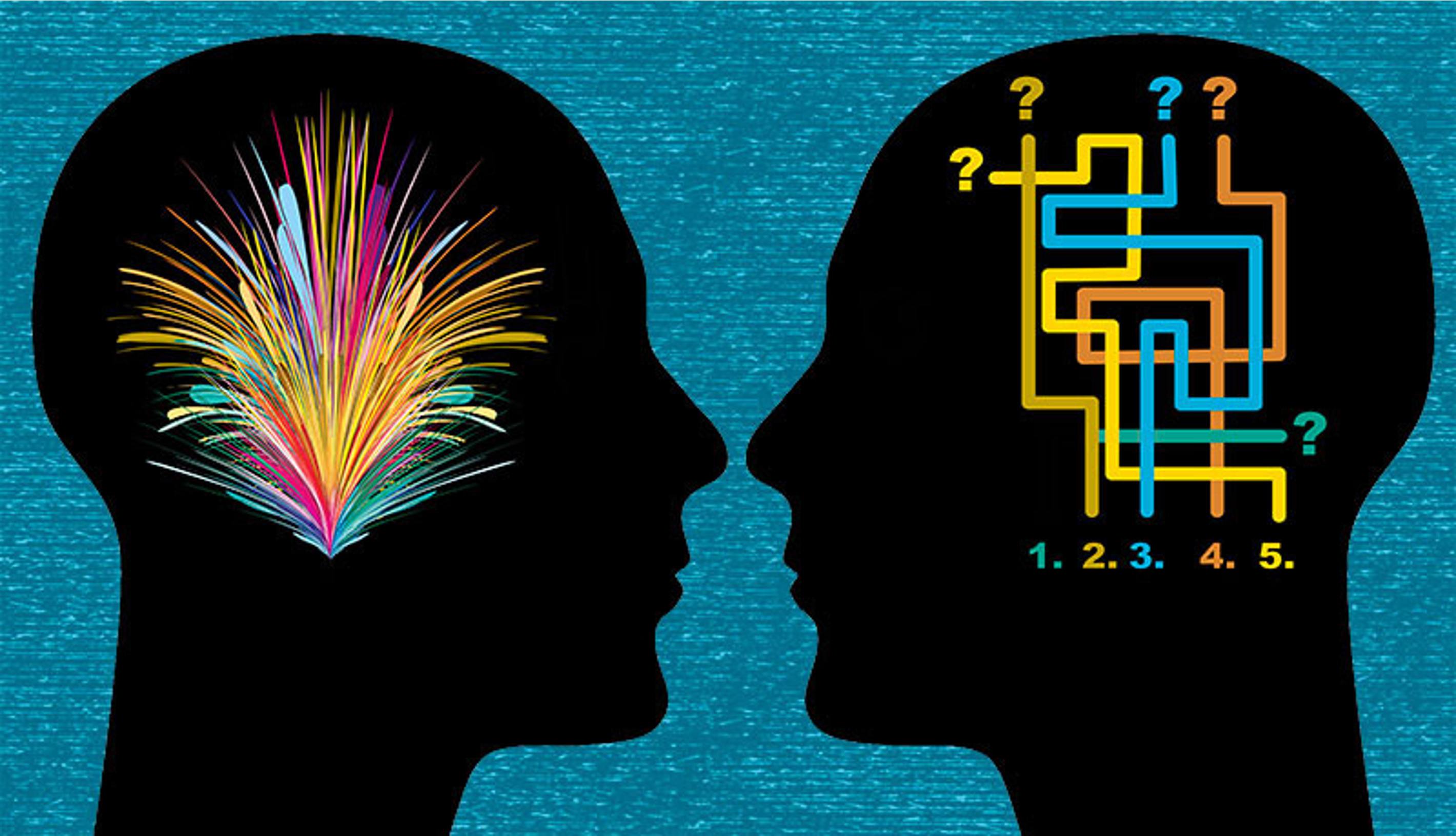
Sex appeal
Nude models generate negative feelings/tension among same-sex consumers
Erotic ads draw attention, but strong sexual imagery may make consumers less likely to:
- Buy a product (unless product is related to sex)
- Process and recall ad’s content
Humorous appeal
Humorous appeal
Different cultures have different senses of humour
Humorous ads get attention
- They’re a source of distraction
- They inhibit counter-arguing, thus increasing message acceptance
Fear appeal
Fear appeal
Emphasize negative consequences that can occur unless consumer changes behaviour/attitude
Fear is common in social marketing
Most effective when:
- Threat is moderate
- Solution to problem is presented
- Source is highly credible
Source vs. message
What is said, how it’s said, and who says it…
Which aspect has most impact on consumer attitudes?
- The answer seems to be related to variations in a consumer’s level of involvement
The elaboration likelihood model (ELM) of persuasion
Consumers are sometimes likely to elaborate upon info presented in an ad, while at other times, little thought occurs
There is more than one path to persuasion
- Central route to persuasion
- Peripheral route to persuasion
The elaboration likelihood model (ELM) of persuasion
Central route
Focus on the most central or important information (i.e., the strong arguments or reasons that justify holding a particular attitude)
Requires a lot of thinking (cognitive effort)
Peripheral route
Involves relatively little thought or cognitive effort
Attitude is based on peripheral cues (e.g., source attractiveness, source expertise, background music, etc.)
Central vs peripheral route to persuasion
- Motivation to process persuasive communication
- Personal relevance (involvement)
- Need for cognition
- Ability to process persuasive communication
- Comprehension of message (knowledge)
- Distractions
- Repetition
The ELM
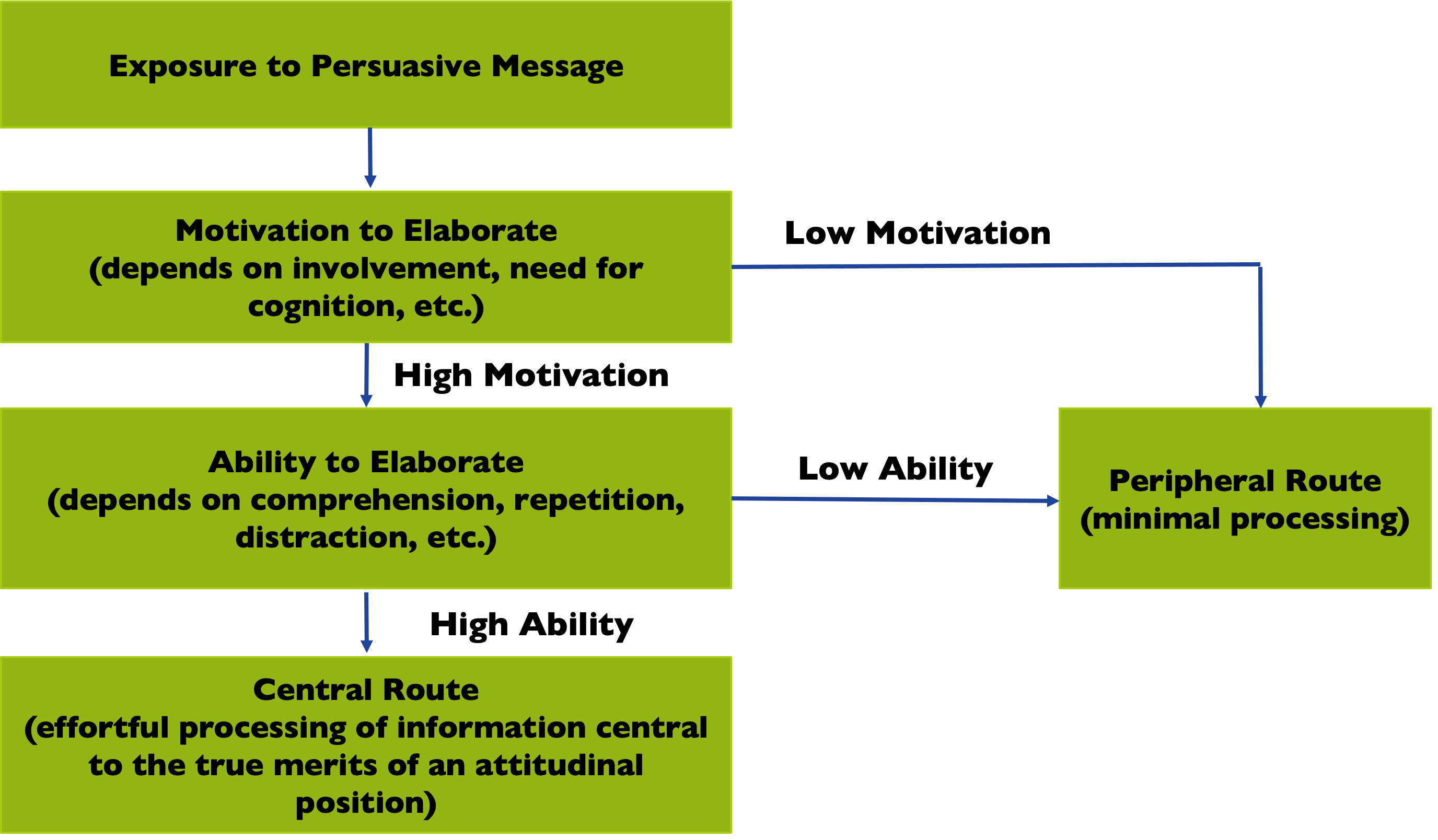
The science of persuasion
Exercise
Robert Cialdini describes six basic tendencies of human behaviour that can be co-opted to get people to comply with a request.
Challenge 1: Imagine that the Public Health Agency of Canada hired you to help them design a communication campaign aimed at reducing social gatherings during an outbreak of a new and highly contagious respiratory infectious disease. Choose the most appropriate of Cialdini’s tendencies (and whatever other persuasion tools you have learned about), and discuss how the agency can use them to persuade Canadians to avoid social gatherings.
Challenge 2: Imagine that you have been hired to help the charitable organization Canadian Guide Dogs for the Blind (https://www.guidedogs.ca) design a fundraising campaign aimed at increasing donations. Choose the most appropriate of Cialdini’s tendencies (and whatever other persuasion tools you have learned about), and discuss how the organization can use them to persuade more Canadians to donate to their cause.
